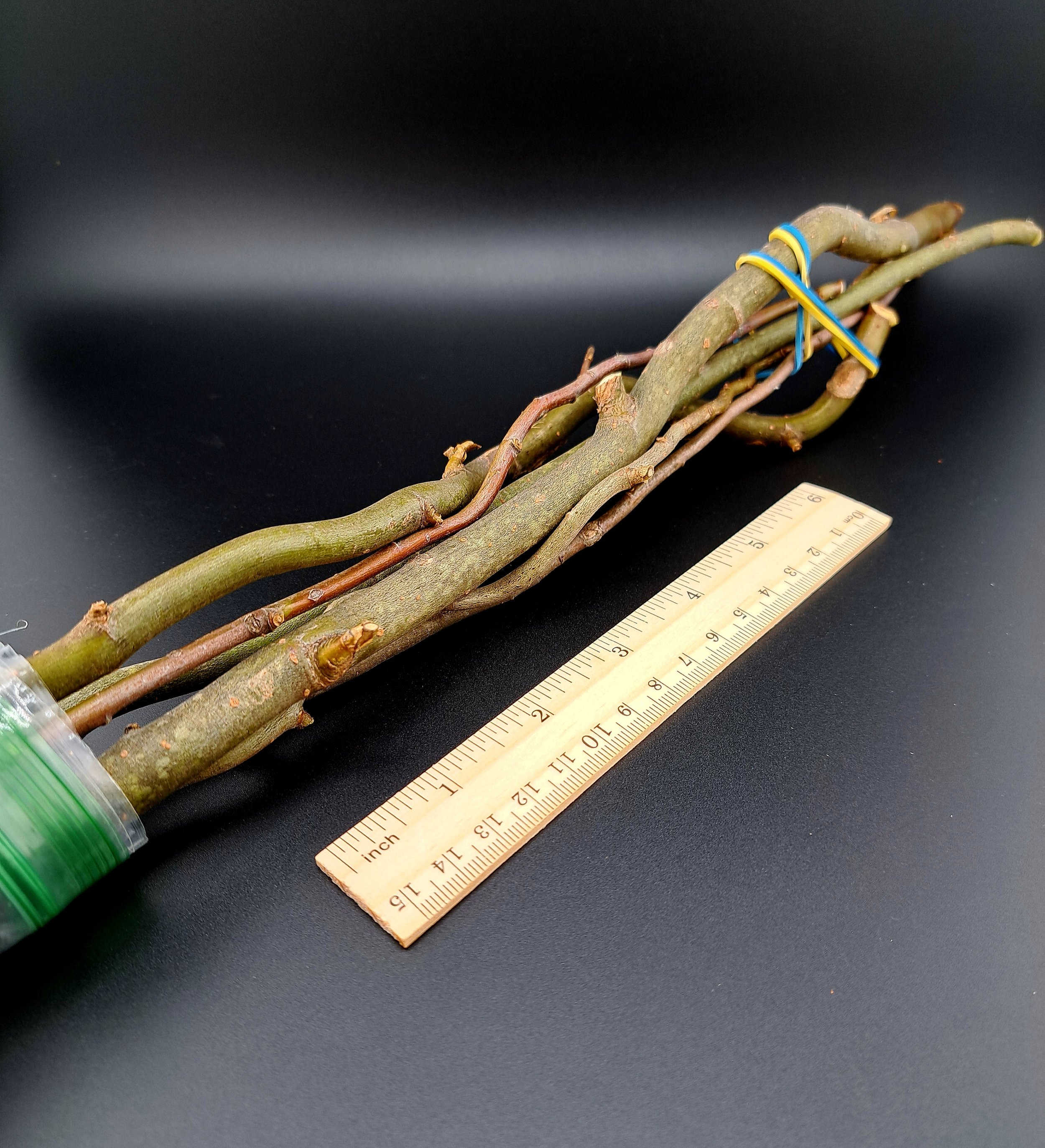

Corkscrew Willow
5 Cuttings
Corkscrew Willow
5 Cuttings
Cuttings depicted in the photos are examples of what you will receive. You will receive 5 cuttings with instructions on how to propagate. Keep refrigerated until ready to plant.
The corkscrew willow, scientifically known as Salix matsudana 'Tortuosa,' is a cultivar of the Chinese willow (Salix matsudana). It is commonly known for its distinctive contorted or twisted branches, giving it a unique appearance. Here are some key characteristics and information about the corkscrew willow:
Features of Corkscrew Willow:
Twisted Branches:
The most notable feature of the corkscrew willow is its contorted or twisted branches. These branches create an interesting and ornamental appearance, especially in winter when the leaves have fallen.
Leaves:
The leaves of the corkscrew willow are lance-shaped and green. They are deciduous, meaning they fall off in the autumn.
Catkins:
Like many willow species, the corkscrew willow produces catkins. Catkins are cylindrical flower clusters that are typically either male or female. They appear in early spring before the leaves.
Size:
The corkscrew willow is a relatively fast-growing tree that can reach a height of 20 to 30 feet (6 to 9 meters) and has a spread of about 15 to 20 feet (4.5 to 6 meters).
Sunlight and Soil:
It prefers full sunlight but can tolerate partial shade. The corkscrew willow is adaptable to various soil types but thrives in moist, well-drained soil.
Landscape Use:
Due to its unique appearance, the corkscrew willow is often used in landscaping to add visual interest. It can be planted as a specimen tree or near water features.
Propagation:
The corkscrew willow can be propagated through cuttings. Take cuttings during the dormant season and plant them in a suitable location.
Maintenance:
Pruning may be necessary to maintain the desired shape and size. The twisted branches are often used in floral arrangements and crafts.
Invasive Potential:
It's important to note that willows, including the corkscrew willow, have invasive potential. Planting them near water bodies or in wet areas may lead to unwanted spreading through suckers.
Winter Interest:
The corkscrew willow's contorted branches provide an interesting silhouette during the winter months when the tree is bare.
Considerations:
Landscape Suitability: The corkscrew willow is suitable for larger landscapes where its unique form can be showcased. It may not be suitable for small gardens due to its size.
Invasive Management: Care should be taken to manage its growth, especially in areas where its invasive potential could be problematic.
Pruning: Pruning should be done thoughtfully to maintain the twisted appearance, and the tree may benefit from periodic shaping.
Before planting any tree, it's advisable to check with local authorities or a horticulturist to ensure that the chosen species is suitable for the local climate and won't become invasive in the area. Additionally, proper care and maintenance will contribute to the health and longevity of the corkscrew willow in the landscape.
